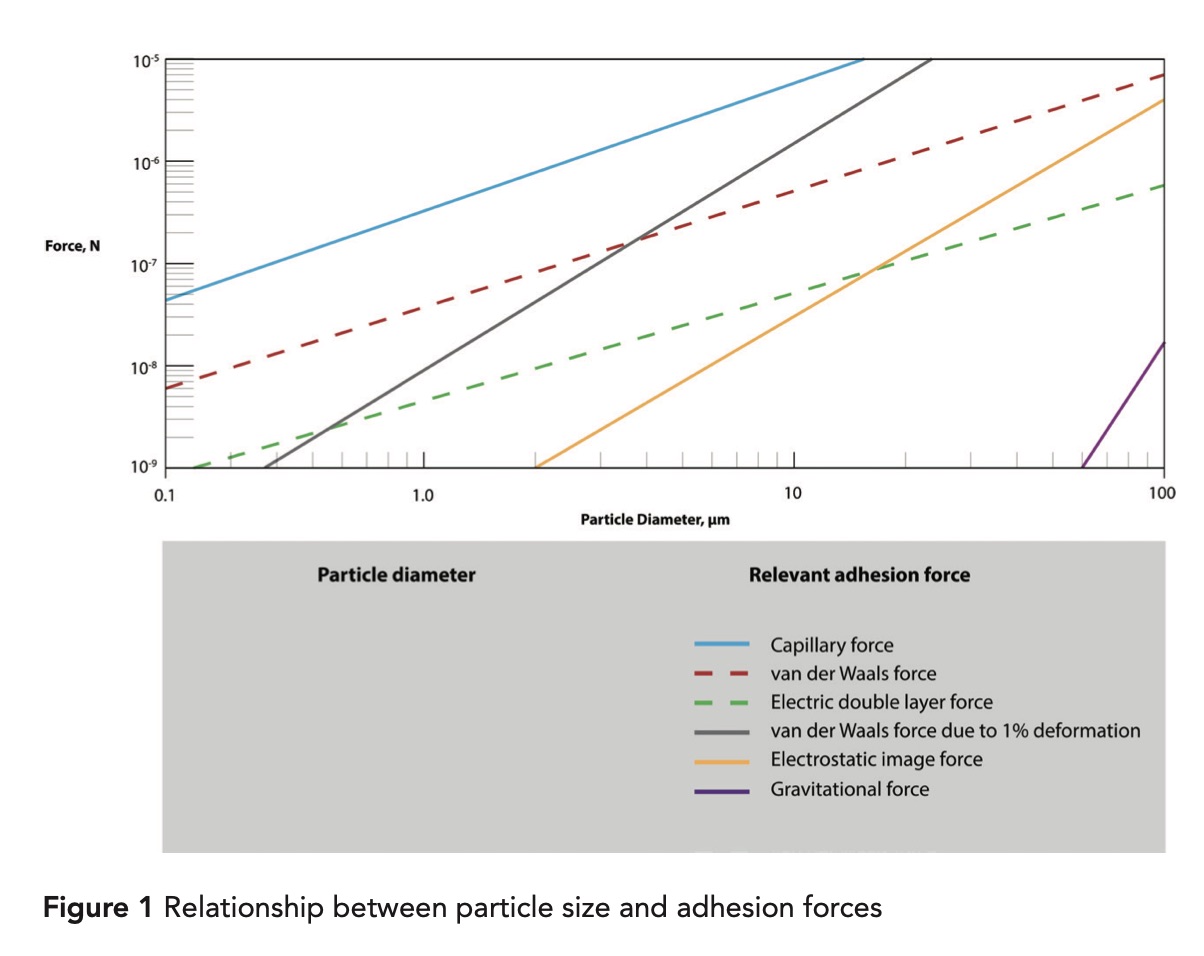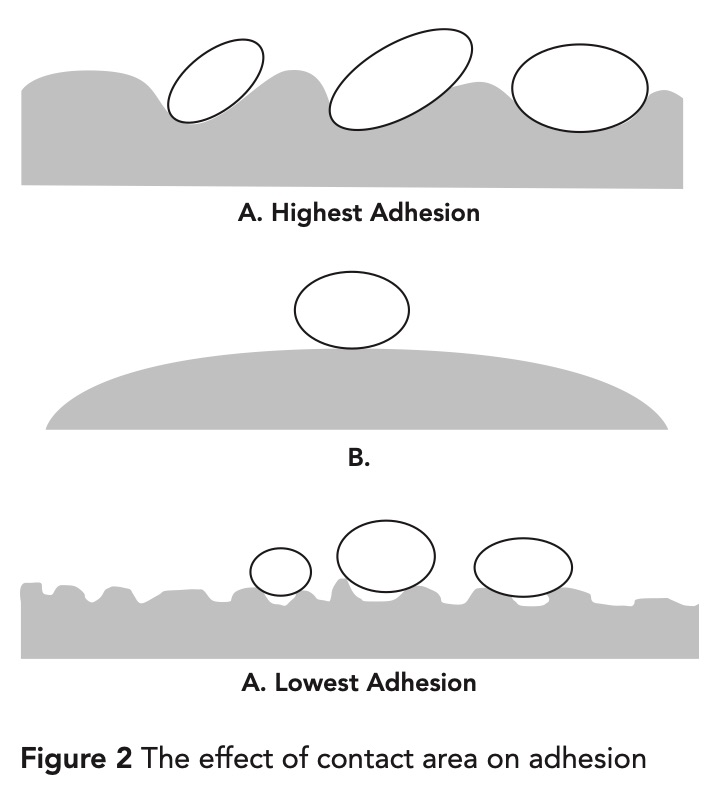Optimizing Contact Cleaning for New Web Applications
- Published: May 02, 2022
By Sheila Hamilton, Teknek Director of Research
For every coating process, removing particles which result in defects, is key to achieving high yields. As new applications involve thinner substrates and innovative types of coating materials the requirements placed on cleaning systems are much more stringent and increasingly scientific analysis is required to optimize contact cleaning systems for different applications.
In order to remove a particle of contamination from a surface, a force greater than that holding the particle onto the surface must be applied. However, the force must not be so great as to distort or damage the surface and so cause a defect in the product being cleaned. For contact cleaning this means that the adhesion of the particle to the elastomer roller must be larger than the force holding the particle onto the substrate and the adhesion of the particle onto the adhesive roll must be higher than onto the elastomer roller. However, the forces of adhesion vary considerably depending on the combination of the particle properties and substrate properties.

Because of the importance of particle adhesion to cleaning performance Teknek sponsored two off 3-year PhD research programs with the University of Hudders-field and the University of Sheffield which aim to scientifically quantify some of the major variables impacting the adhesion forces between particles of contamination and elastomer cleaning rollers. The modelling of the forces of adhesion between particles and surface is key to understanding how best to remove the particles and so optimize the cleaning efficiency.
When particles are large, gravity is the major force holding them onto the surface and the modelling of the forces involved is relatively simple. However, as particles which cause defects get smaller, as is the case in many new applications, surface effect forces play a larger part in holding the particle to the substrate.
Below 10 micro particle size neither gravity nor static play any significant part in particle adhesion. The forces that do affect adhesion are related to the chemical and electrical properties materials of the particle and the substrate. While the material of the substrate may be known, the makeup of the particles of contamination is random and much more varied leading to substantial variations in the adhesion forces both to the substrate and to the elastomer cleaning roller.
The total adhesion applied to a particle also depends significantly on the area of contact between the particle and the surface, which in turn depends on the shape of the particle and the surface topography of the surface.

This is illustrated in Figure 2 where maximum adhesion is where the particle shape fits neatly within the surface roughness maximizing the contact area. Particle shape must also be considered; for example, a flat platelet has much higher adhesion than a spherical particle of the same material on the same substrate because of the increased contact area.
One of the newer applications for cleaning is in the manufacture of EV batteries where contamination is a major cause of defects such as short circuits and poor performance. Short circuits are often caused by metal contamination piercing the separator film between the electrodes. The metal contamination is usually from slitting of the metal foil of the electrodes. The photograph in Figure 3 shows a Teknek Cleaner on electrode foil after slitting showing the build up of contamination at the edges of the foil on the adhesive roll.

In contrast any contamination, either conductive or nonconductive, on the electrode surface itself causes a local disparity in the charge transfer mechanism due to dewetting of the electrolyte. This causes a reduction in both charge capacity and in the number of charge/discharge cycles the battery can sustain resulting in a shortened battery life. The forces of adhesion are different for the metallic and non-metallic contamination and may require two different types of cleaning roller to optimize the cleaning performance of the system.
In addition to optimizing particle removal without causing damage to the increasingly thin substrates, some new applications require additional functionality from the cleaning rollers. Some examples of the additional functionality are given below.
Some applications such as metal sputtered or thin conductive films used in displays are static sensitive in that discharging a build-up of static charge can evaporate the thin conductive layer destroying the functionality of the product. By default, when rollers run on a surface, they tribo charge the surface generating a high static charge. By incorporating a range of conductive additives into the elastomer formulation the build up of charge is dissipated.
For cleaning applications within a vacuum environment, it is essential that no outgassing occurs from the roller during use.
Where coating, printing or lamination is done after cleaning, any changes caused by cleaning to the surface energy of the film should be negligible to avoid dewetting of the coating.
Food and medical packaging applications, especially after the COVID pandemic, are concerned not only with particle removal but also with the elimination of microbes at all stages of production.
New applications for coated films and laminates require a much more scientific approach to cleaning to ensure that defects of all types are minimized while providing the additional functionality that emerging applications require.
About the Author
Sheila Hamilton first joined Teknek in 1987 as technical director. She is a recipient of two Smart Awards in Electromagnetic Interference. She has also been involved in government funded research projects looking at the suitability of materials for use in Printed Electronics, particularly for use inside high vacuum environments.












